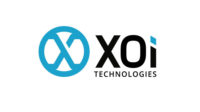WALLER, Texas — A collaboration between Daikin Comfort Technologies North America Inc. (Daikin) — a subsidiary of Daikin Industries Ltd. — and XOi Technologies is now providing HVAC contractors an advanced, curb-to-curb, field services solution driven by augmented reality and artificial intelligence that’s built to remove inefficiencies and improve bottom lines.
What is a curb-to-curb solution? For Daikin and its brands of HVAC products — Daikin, Goodman, and Amana brands — it’s XOi software that automates the entire workflow to boost quality repairs and replacements. It connects field service techs, home offices, and their customers, while enabling on-the-job photo and video documentation, real-time remote video support and training, plus access to a vast knowledge base of product documentation and training content.
All of that is accomplished through a cloud-based app that’s customizable for specific dealer needs. For their customers, it allows the repair process to be immediately shareable, transparent and, perhaps more significantly, validating.
Contractors using this curb-to-curb service solution found they could grow revenues up to 18%, cut callbacks by up to 40% and reduce re-servicing by up to 80%, according to Nashville-based XOi Technologies.
It is a powerful tool designed to create technician enablement, explained Stuart (Stu) Werner, vice president of technical services for Daikin.
“XOi simplifies technicians’ work while validating consistent quality and, ultimately, transforming the customer experience,” said Werner. “With XOi’s software solution, HVAC technicians can better document, communicate, and verify the services they provide. It equips field professionals with capabilities to perform full-service diagnostics at any jobsite by applying data science across live video, workflow automation, and artificial intelligence.”
At its core, XOi software standardizes workflows and documents job sites by collecting, indexing, and analyzing data to improve both current and future service calls. But, Werner said, it also allows Daikin technicians to build a deep and easily accessible institutional knowledge base that supports real-time decision-making and data-based continuity.
“What elevates XOi’s technology from the rest of the field service management sector is its historical job data functionality that seamlessly ties together customers, contractors, distributor and OEMS, laying the foundation for future value. If we can reduce the challenges HVAC techs face — documenting the entire process for both customers and our industry’s knowledge base —we can tackle one of HVAC’s biggest challenges head on," added Werner.
Streamlined workflows, Video Coaching
XOi’s cloud-based suite takes a vanguard approach, leveraging augmented reality and artificial intelligence to apply, aggregate, and analyze critical job data from the moment a field tech steps onto a job site.
The entire workflow is streamlined and automated, with a simple capture and share function that allows photo/video documentation, while pinpointing manuals, parts, and training specific to the equipment. The workflow is readily shareable to the home office, distributors, and OEMs. Customers can get a record of service call highlights, making it easier to understand repair or replacement costs.
With XOi’s coaching screen, field techs and others can collaborate with live, interactive video that’s recorded and indexed, a feature built to help less experienced technicians or those facing repair challenges. Technicians can access more than 120,000 pieces of content.
“Most field service management software solutions are effective for high-level operations, but we designed XOi to fully capture the granular detail that is crucial not only for real-time decisions but for long-term accuracy and efficiency,” said Aaron Salow, founder and CEO of XOi. “We’re providing Daikin an all-in-one tool that streamlines and documents the full curb-to-curb experience, while including education, training, and communication functionality.”
“Daikin group technicians can elevate their overall service offering while building a comprehensive data set based on historical job data, collective knowledge, and job and equipment history,” added Werner.







